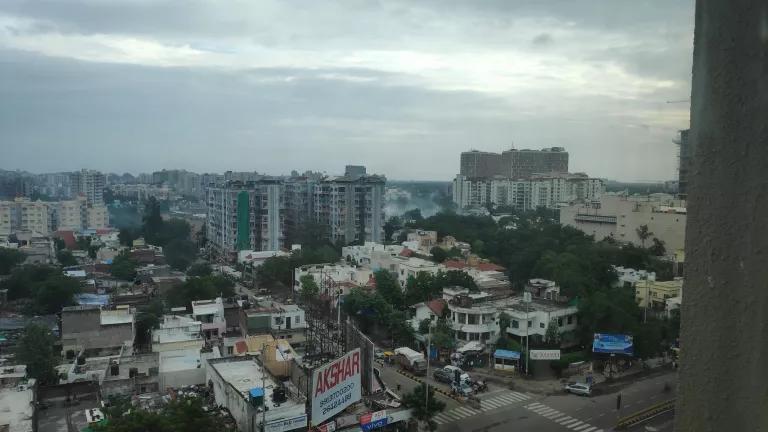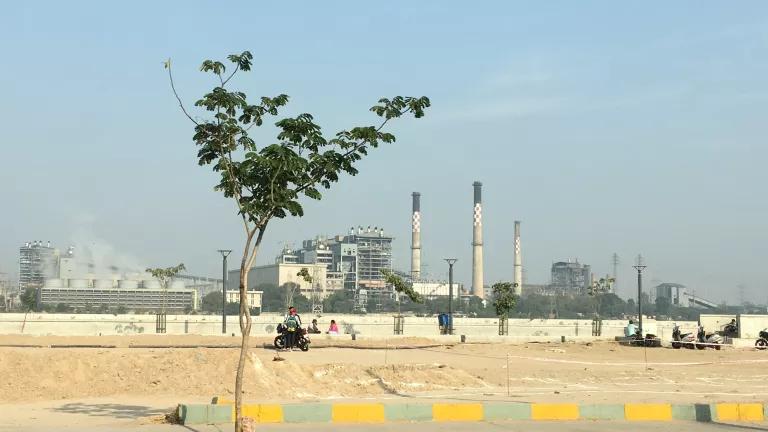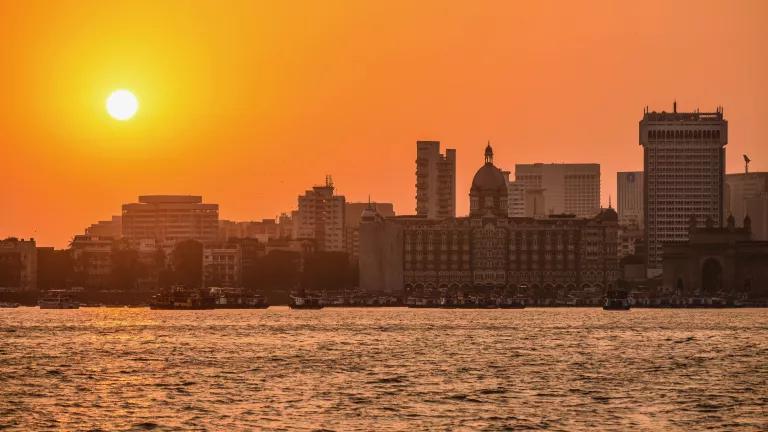Jodhpur’s First Heat Action Plan Highlights Vulnerable Areas
A new analysis of local data will help leaders target heat responses to heat-vulnerable wards.

Shri Atul Prakash, Commissioner of Jodhpur Nagar Nigam North, releases the new Heat Action Plan with partners from Mahila Housing Trust and NRDC India on April 18, 2023.
Mahila Housing Trust/NRDC India
This blog was co-authored with Abhiyant Tiwari and Ritika Kapoor
The Indian city of Jodhpur this week launched its first-ever Heat Action Plan (HAP) to strengthen local preparedness and resilience to intensifying extreme heat hazards. The release of this plan, developed in consultation with Mahila Housing Trust (MHT) and the Natural Resources Defense Council (NRDC), marks an important step forward for the city and the state of Rajasthan, one of India’s 23 heat-prone states.
The Jodhpur plan was developed based on local data and community input, and enables the city to better organize local heat actions that protect public health. Heat Action Plans are not merely a paper exercise; scientific evidence indicates that such plans can help to make measurable reductions in mortality after implementation.

A stakeholder workshop in March 2023 helped to inform the development of Jodhpur’s Heat Action Plan.
Mahila Housing Trust/NRDC India
Local Data Improves Understanding of Heat Vulnerability
Jodhpur’s HAP advances several innovations to better characterize local heat risks. The plan includes a data-driven spatial vulnerability assessment that maps out local conditions and enables city leaders to visualize how heat threatens different wards of the city in unique ways. The new HAP in Jodhpur is the first in the state of Rajasthan to include a vulnerability assessment, which is built on three pillars:
- Heat Exposures: Jodhpur’s HAP considers local temperature trends and population density in different wards, to characterize the heat burden of local communities.
- Population Sensitivity: Because certain populations are disproportionately harmed by extreme heat, the vulnerability analysis considers certain characteristics (including the urban heat island, the local gender mix, prevalence of slums, and literacy rates) to identify local populations that may be especially sensitive to heat hazards.
- Adaptive Capacity: The Jodhpur analysis also maps community resources like urban health centers, parks, roads, and waterbodies that help residents find relief from the heat or access medical treatment.
The vulnerability analysis captures these different elements of vulnerability and plots them on the same map, enabling a city-level view of heat risks. On the map below, warmer colors (yellow, orange, and red) indicate wards with high vulnerability to heat, based on this analysis:

A ward-level heat vulnerability analysis, conducted during development of the Jodhpur Heat Action Plan. Wards with higher risk scores (warmer colors) are especially vulnerable to extreme heat risks.
Mahila Housing Trust/NRDC India
“Jodhpur’s new HAP will enable the city leaders to target climate and heat-resilience projects at a ward-level, which can help prioritize projects to reach the city’s most vulnerable people and places.”
Bijal Brahmbhatt (Director, Mahila Housing Trust)

Houses with cool roof paints deployed to adapt to extreme heat in Jodhpur, India.
Mahila Housing Trust/NRDC India
Targeting Heat Interventions
The vulnerability analysis in Jodhpur's HAP provides a visual system for city leaders to identify especially heat-vulnerable wards. That information can help the municipal government to direct heat interventions towards the most at-risk wards. Such interventions can include cooling centers, water stations, and landcover modifications like cool roofs.
Those types of roofs, which help to reflect incoming solar radiation, can help to moderate indoor temperatures and, on a city scale, help to reduce the urban heat island effect that concentrates heat in built-up areas. Research indicates that cool roof interventions can help India to reduce strain on the electricity grid by cutting demand for air conditioning to cool buildings.
Improving Heat Resilience in Jodhpur: The Path Ahead
This week’s launch of Jodhpur’s HAP marks an important milestone for the city; now, the hard work of implementing and strengthening the plan begins. Because climate change is fueling longer and more intense heatwaves across India, coordinated actions to protect human lives and livelihoods from dangerous temperatures are more urgent than ever. NRDC and Mahila Housing Trust are proud to partner with Jodhpur to sustain local action that keeps people safe from dangerous heat.
“The Jodhpur HAP builds upon the great work and learning from Ahmedabad and other cities in India. This HAP will prioritize an enhanced focus on the needs of vulnerable groups that have been identified through the vulnerability assessment by NRDC and Mahila Housing Trust."
Dipa Bagai (Country Head, NRDC India)




